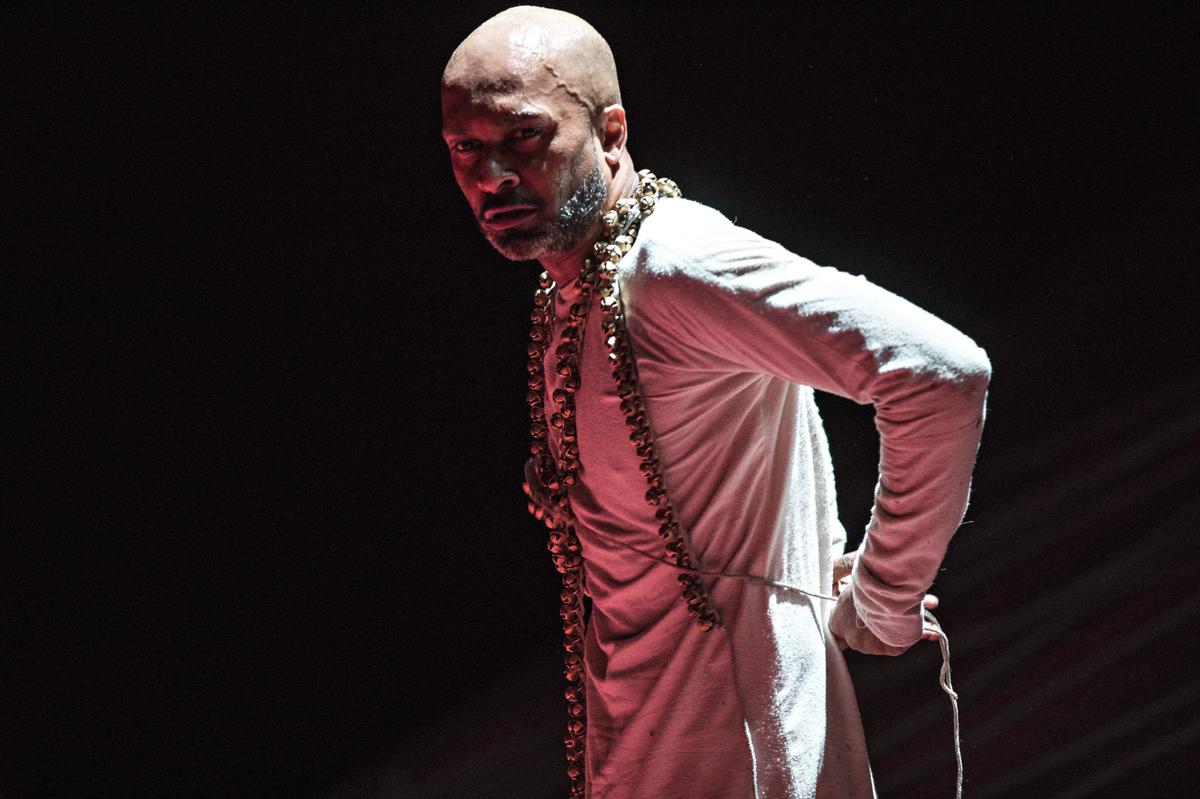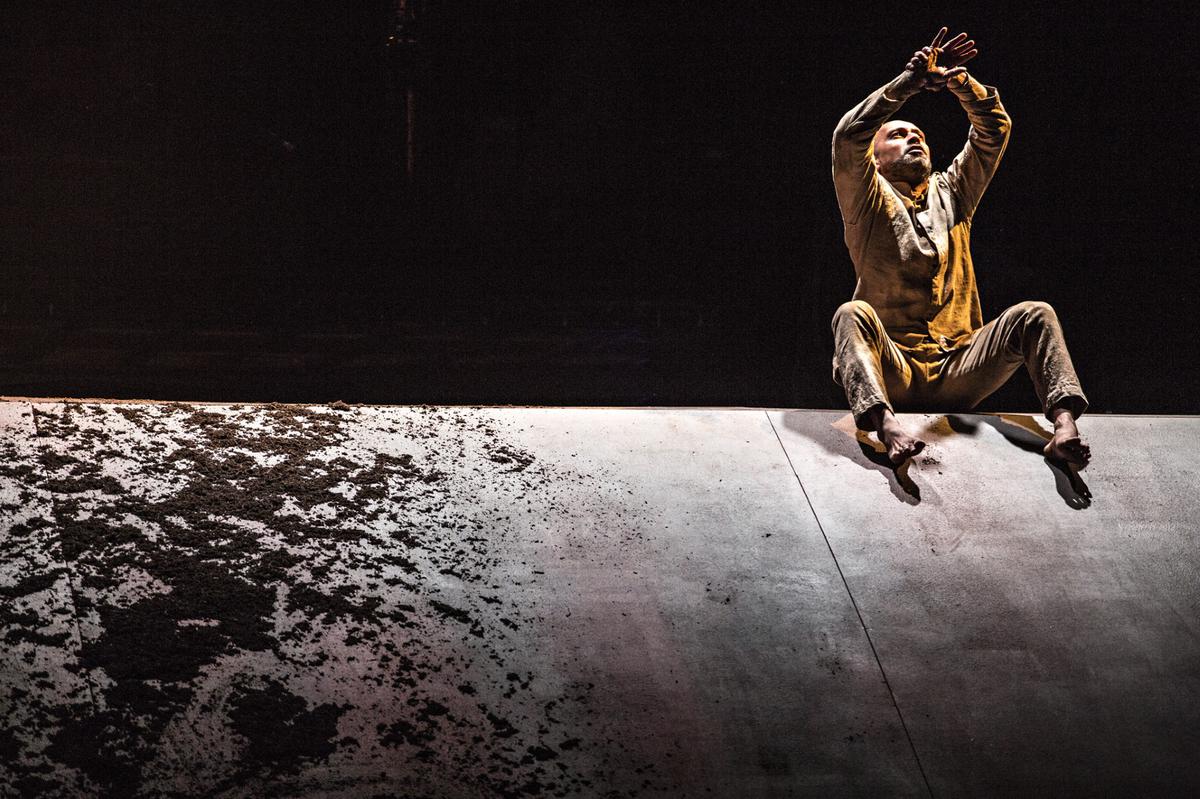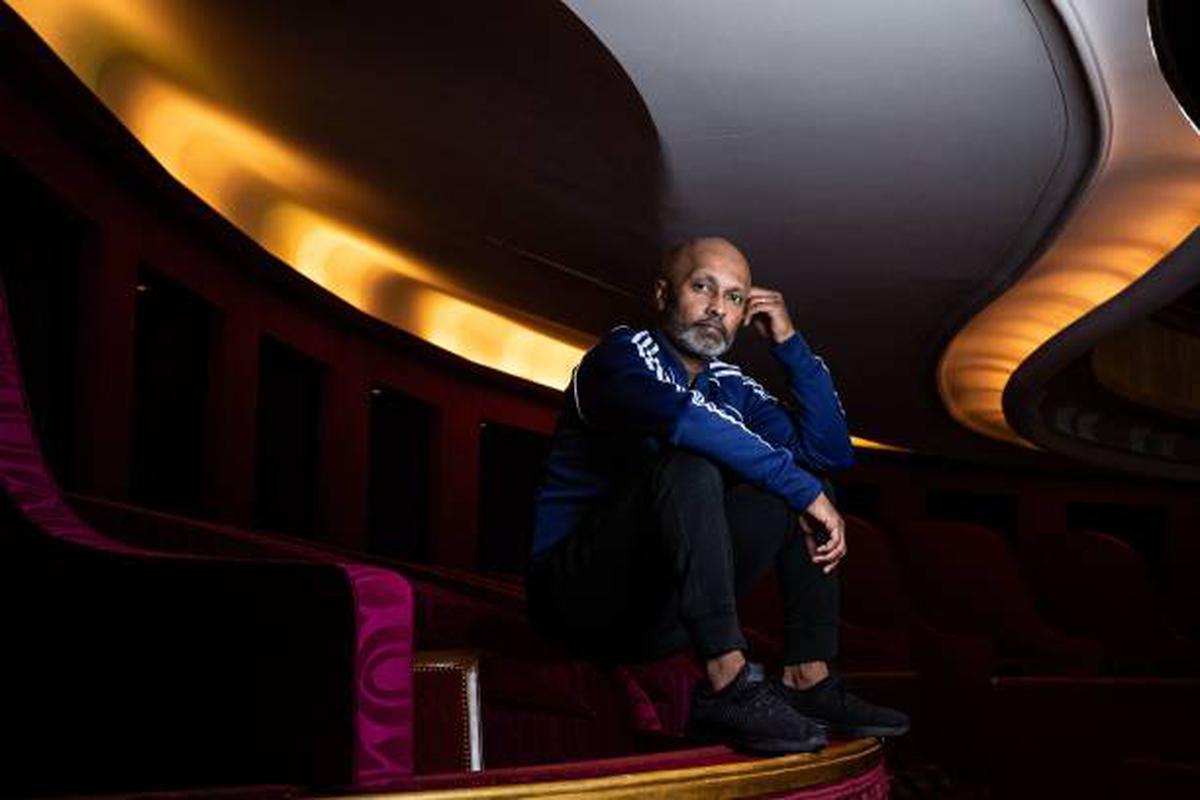Akram Khan gears up to perform his last solo on an Indian stage


Akram Khan brings ‘Xenos’ to India
| Photo Credit: Akram Khan Company
The ghungroo in Akram Khan’s ‘Xenos’ is not just a rhythm accessory, it’s intrinsic to the war narrative. When he ties one end of the strings of ankle bells to his wrists, they become the chains of a captive soldier. They transform into an ammunition belt when he wraps them around his torso. Kathak and Akram’s cultural identity (a Bangladeshi immigrant in the U.K.) are the core of this intense piece that premiered in Athens in 2017 as the epilogue performance of the audaciously experimental dancer-choreographer.
After travelling around the world, ‘Xenos’ makes its final stop in India. It will be staged on June 24 and 25 at the National Centre for Performing Arts in Mumbai.
Akram has also chosen to perform his last show as a soloist on an Indian stage. After all, it was Kathak that set him off on an incredible creative voyage.
‘Xenos’, which in Greek means stranger or foreigner, was created to mark the centenary of WWI. It takes you through the pain and trauma of over a million Indian soldiers who fought for the British empire but have found no place in history or our memory. Akram plays an Indian dancer, who while performing at a wedding is suddenly pulled out and thrown into the battlefield. He feels like a stranger in the harsh, barren landscape. Hence, the title ‘Xenos’.
Growing up in Wimbledon, Akram became aware of the notions of displacement, home, and identity early on in life. While struggling to come to terms with them, he found refuge in dance, which empowered him to tell stories of those ostracised, othered, or racially abused, and of migrants and victims of conflicts too. Deeply complex and disturbing subjects, Akram learned to negotiate them with finesse and depth, creating powerful imagery that resonated with audiences across the globe.
Though he decorates his narratives with Kathak’s dizzying spins and fluid gestures, and dramatic contemporary movements, pushing his body to defy all limits, underneath this aesthetic sheath is something raw and vulnerable.
The first time Akram went up on stage, he realised his body could express all the things that he struggled to say. It became his voice. Over the years, he has allowed it to speak louder and clearer. This weekend, it will do so one last time.
Akram talks about what the term ‘retirement’ means to a dancer and, creating ‘Xenos’, his swansong.

Akram Khan brings alive the stories of Indian soldiers who fought in WWI
| Photo Credit:
Jean Louis Fernandez
In an interview with The Hindu in 2018, you had said that in a dancer’s life, there comes a time when the body tells you to stop. Being Britain’s most celebrated artiste, how difficult was it to listen to it?
I wanted to choreograph a solo to complete my career. Strangely enough, barring ‘Desh’, I hadn’t made many full-length contemporary solos. So to finish with ‘Xenos’ felt a bit incomplete, but over time my body encouraged me to retire. More than physical, it’s the psychological shift that is a bigger challenge. You may feel confident once you are on the stage, but there’s always the fear of messing up as full-length solos are a huge strain on the body.
Ironically, you chose a physically and mentally exhausting farewell piece.
The door had already opened when I created ‘Dust’ for English National Ballet. And then I was invited by an organisation 14-18 NOW to create a piece for the First World War centenary. They suggested that I find some connection to war in the solo I was making. However, I felt driven by several articles that were written about the war during the creation of my solo. Ruth Little, my dramaturg, was sharing archival material and the stories of the Indian colonial soldiers that I had never known about, so I felt duty-bound to bring to light these unheard stories.

‘Xenos’ combines vigorous Kathak and contemporary movements
| Photo Credit:
Jean Louis Fernandez
How did you think you could do this through dance?
Initially, it was about Prometheus, who then became absorbed into the story of this one colonial soldier, who represented all the soldiers. He later became the character that I would embody. I wanted to relate to it and have a personal relationship with that character. So we decided to make him a dancer, performing in India for the dignitaries of the empire. This solo is not one person’s story even though it is performed by a single dancer. This story belongs to those in the shadows. Anything where you have to immerse yourself will always be challenging. I believe as an artiste one always has to find the pleasure in drowning.
You are known to use your art to respond to socio-political issues. As an artiste what stirs you the most?
What moves me are the people who have something to say. Whose stories haven’t been heard. The voice of others has always been an important part of my work because I am the shadow. At least that was true for most of my childhood. And then dance and the stage enabled me to come out of shadows; to confront and then embrace light. Some of my work is autobiographical, but ‘Giselle’, ‘Until the Lions’ and ‘Xenos’ moved away from autobiography.
John Berger had a huge influence on me. He said: ‘Never again will a single story be told as if it were the only one.’ That quote really hit me at some point, and I started to investigate other people’s stories from other perspectives. ‘Until the Lions’ was based on a female protagonist. All my earlier works were not really political. But this piece was consciously political. ‘Xenos’ was part of that journey of exploring the political and social world. Art is sometimes politics’ sweeter tongue.
I’m also inspired by things that are unconventional to my own experience, for example, new locations, anything that challenges my experience or the parameters that I’m comfortable in. The 2012 Olympic opening ceremony was exactly that.

Akram Khan at The Theatre des Champs Elysées in Paris
| Photo Credit:
JOEL SAGET
How do you plan to stay connected with dance after retiring from full-length productions? As a choreographer, how difficult or easy is it to share your vision with those who are part of the Akram Khan Company?
It is about developing a language to be able to communicate wholly, holistically, spiritually, and technically what you are searching for in the dancers. As I retire, I will have the language of words, not of the body, so that’s a big shift.
How do you perceive the changes in audience response and artistes’ creativity in the post-pandemic world? Is digital intervention coming in the way of artistic expression?
People tend to get it wrong when they think something should replace something else. For me, if that happens then that’s a tragedy because we can do both. One adds to the other. I would call it digital addition; it enhances and allows the theatre experience to grow because a lot of people can’t get to the theatre. It’s another way of connecting, but the theatre is theatre. You can’t replace that experience. That is the oldest and most powerful ritual, it awakens the five senses.
What do you want to tell dancers who are keen to indulge in contemporary subjects and choreography?
Nothing specific. But what I would say to all dancers is try to search for silence and stillness. That is the most powerful dance.

